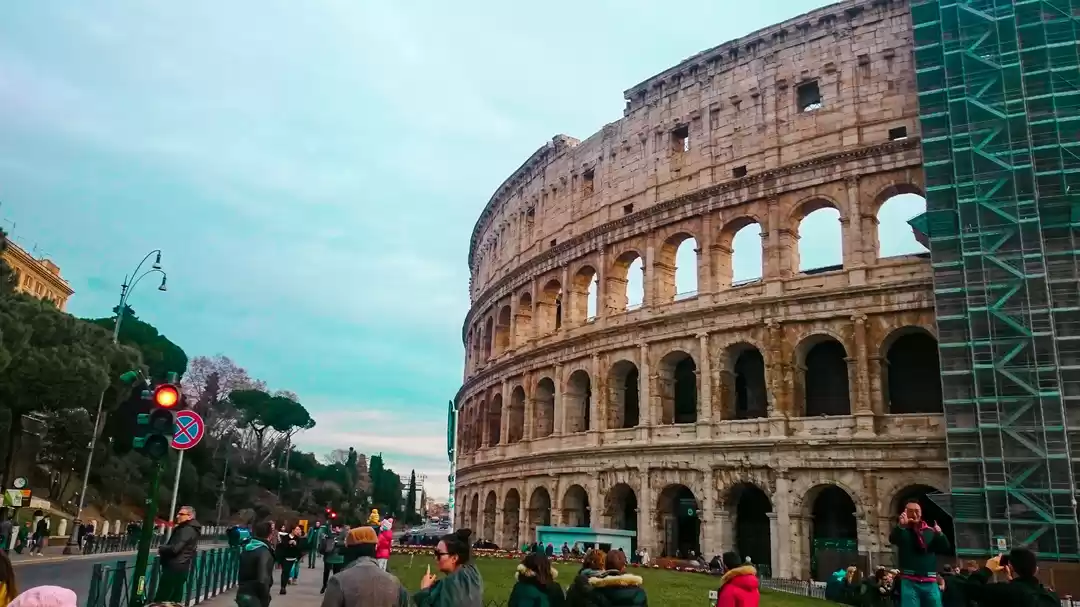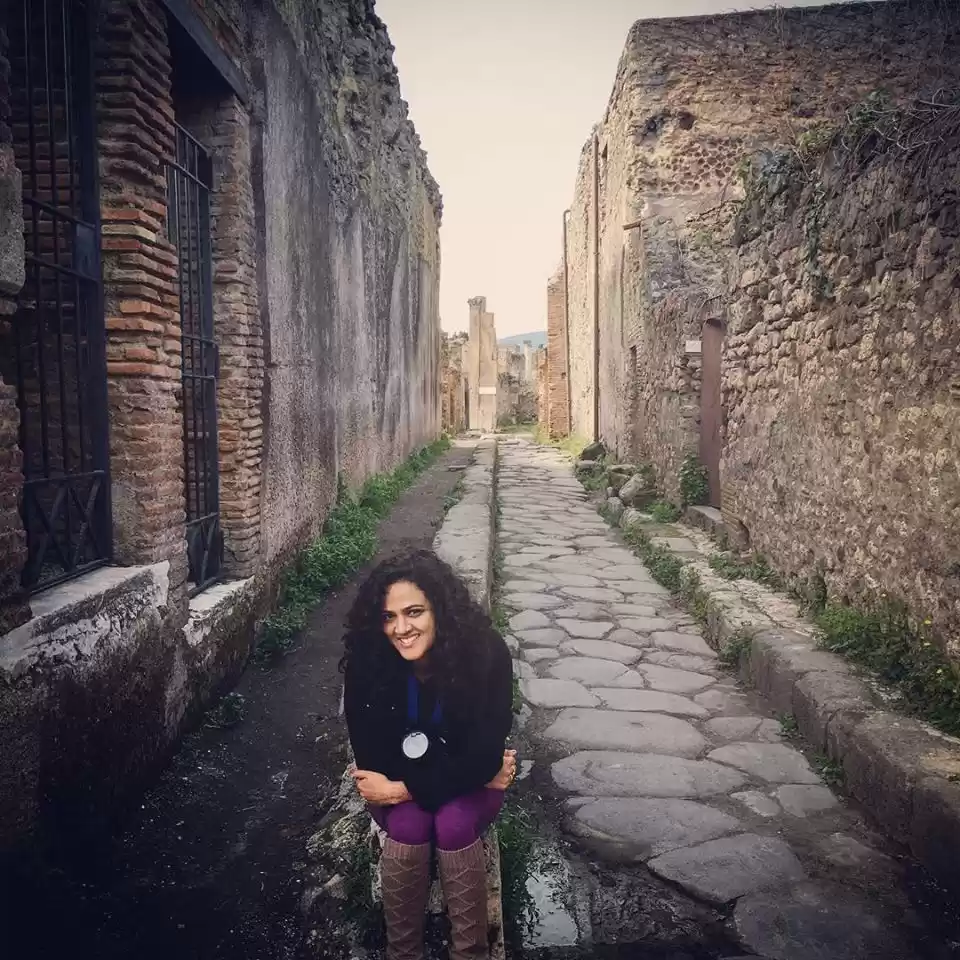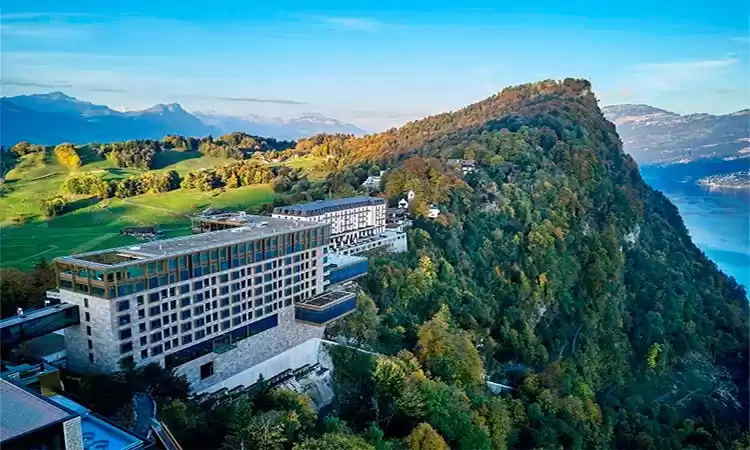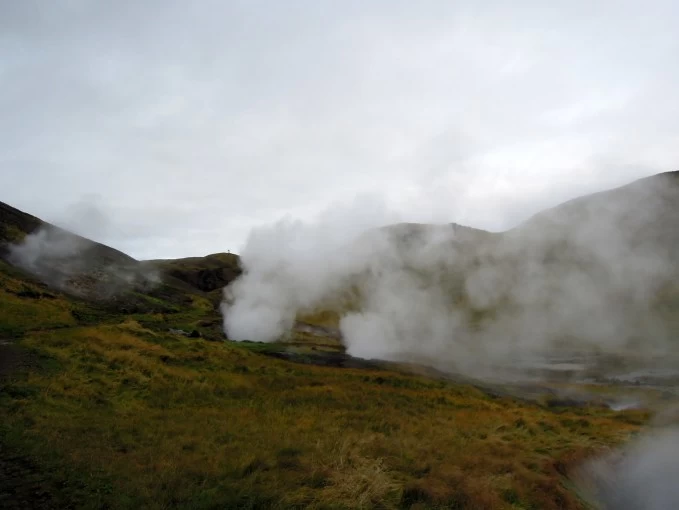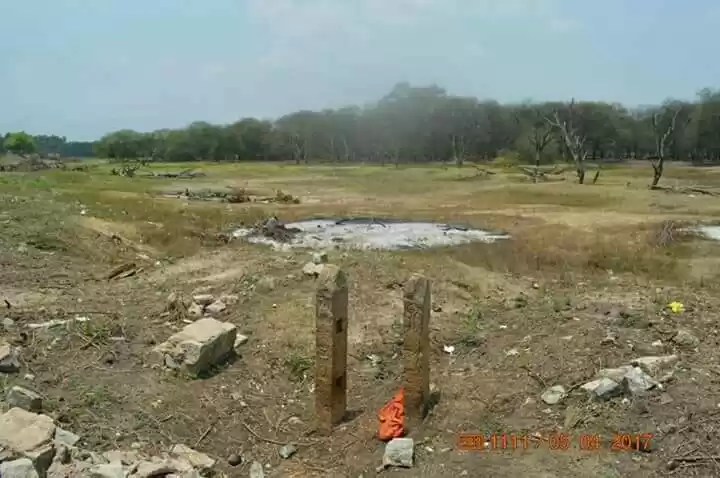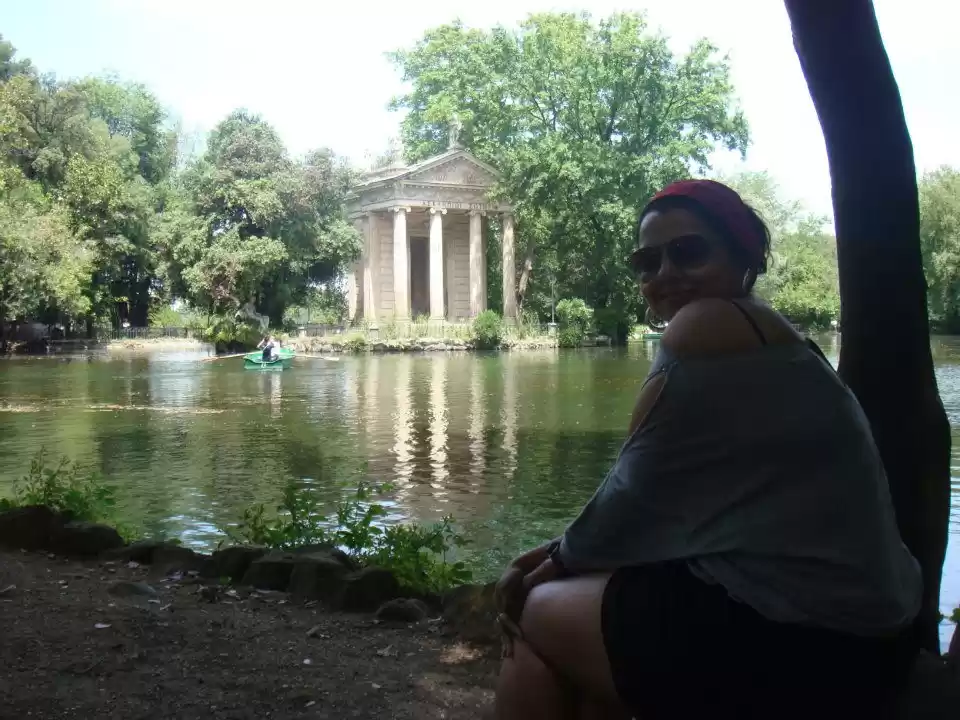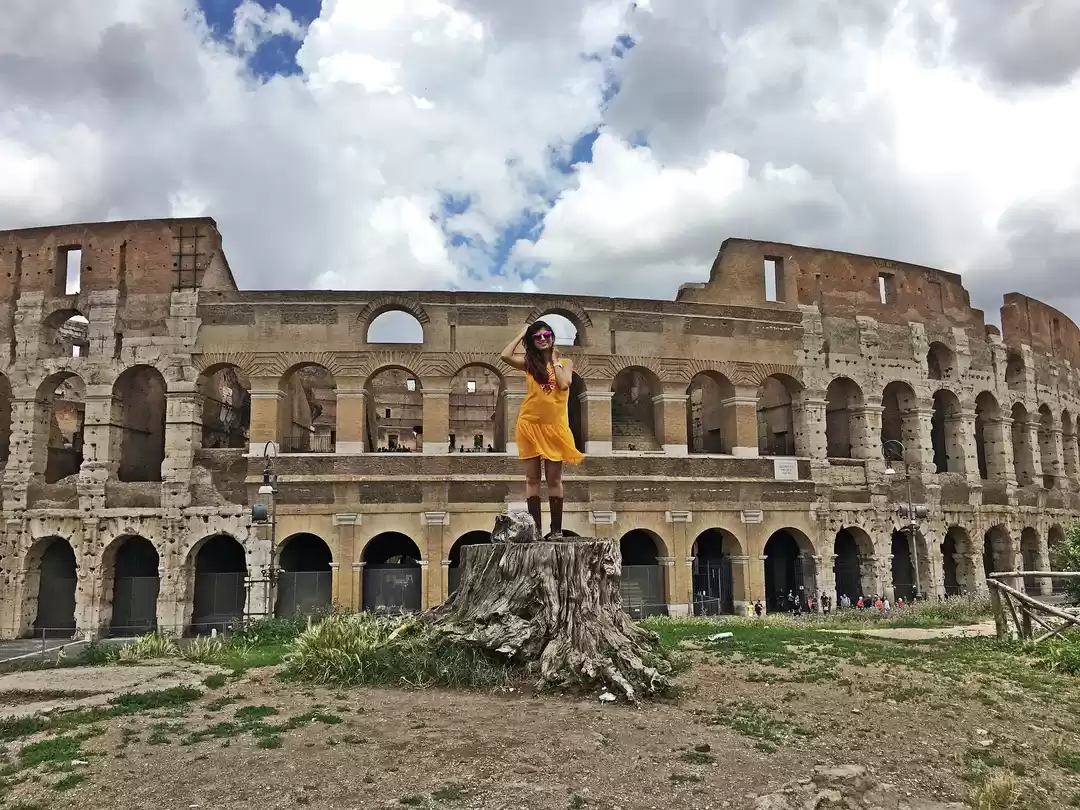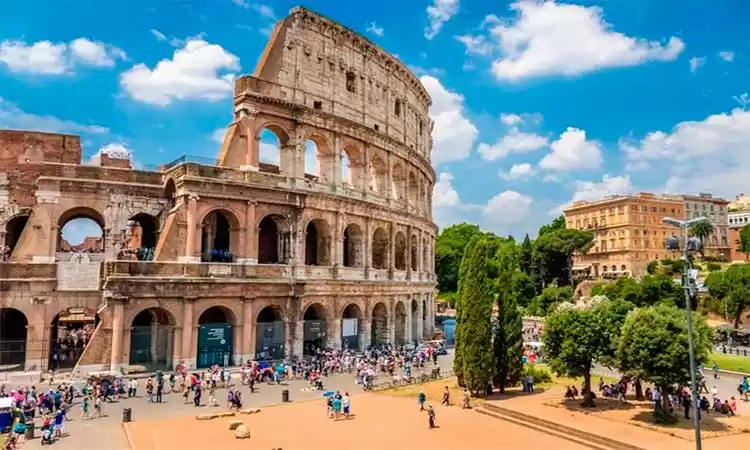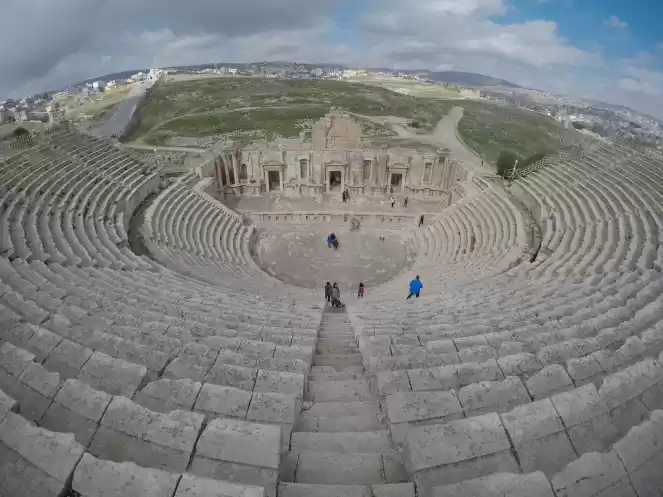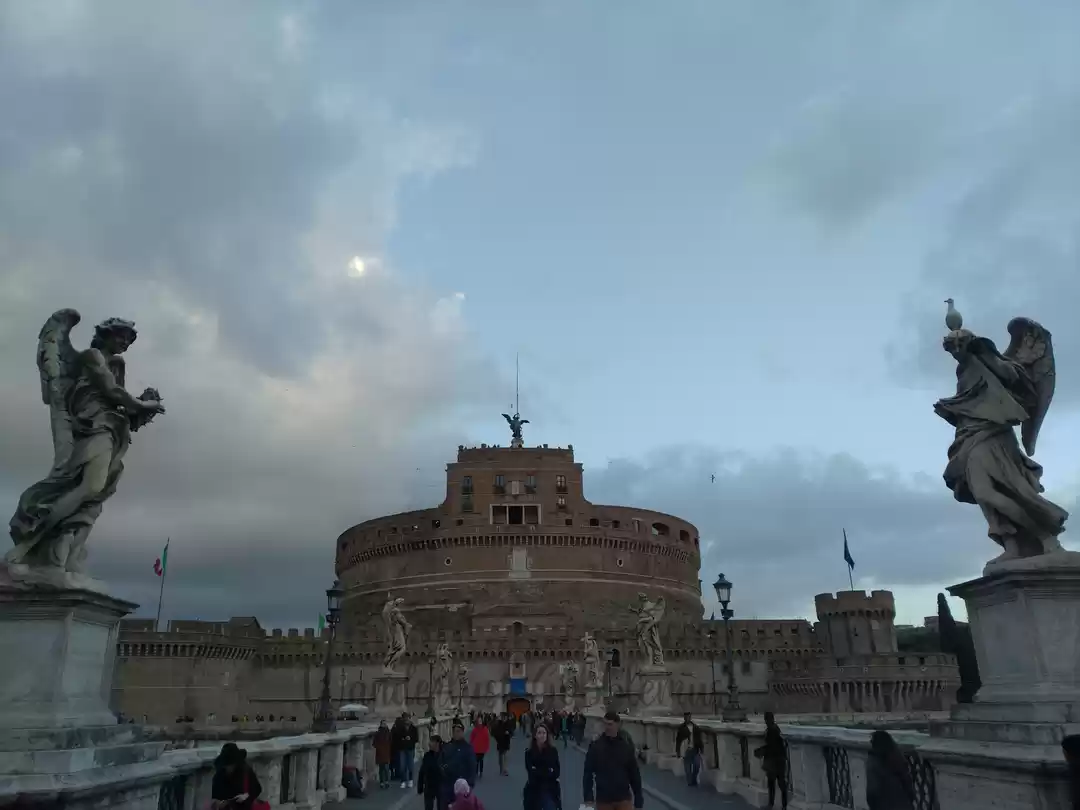Do you want to travel back in time and immerse yourself in the ancient culture of Rome? Do you want to see how the emperors and nobles relaxed and socialized in their luxurious spas? Do you want to explore one of the best-preserved and most impressive Roman ruins in Turkey? If you answered yes to any of these questions, then you should definitely visit the Roman Baths of Ankara, the capital city of Turkey.
The Roman Baths of Ankara are a stunning archaeological site that showcases the splendor and sophistication of the Roman civilization. Built in the 3rd century AD by the Emperor Caracalla, the baths were a complex of buildings that included a large courtyard, a gymnasium, a sauna, a hot room, a cold room, and a massage room. The baths were not only a place for bathing and hygiene, but also a place for entertainment, education, and socialization. The baths were decorated with exquisite mosaics, statues, and fountains, and were surrounded by gardens and shops.
In this article, you will learn everything you need to know about visiting the Roman Baths of Ankara, including the history, the features, the tips, and the nearby attractions. You will also discover how to experience the baths like an emperor, and enjoy the ultimate Roman spa day. Whether you are a history buff, a culture lover, or a wellness seeker, you will find something to suit your interests and preferences at the Roman Baths of Ankara.
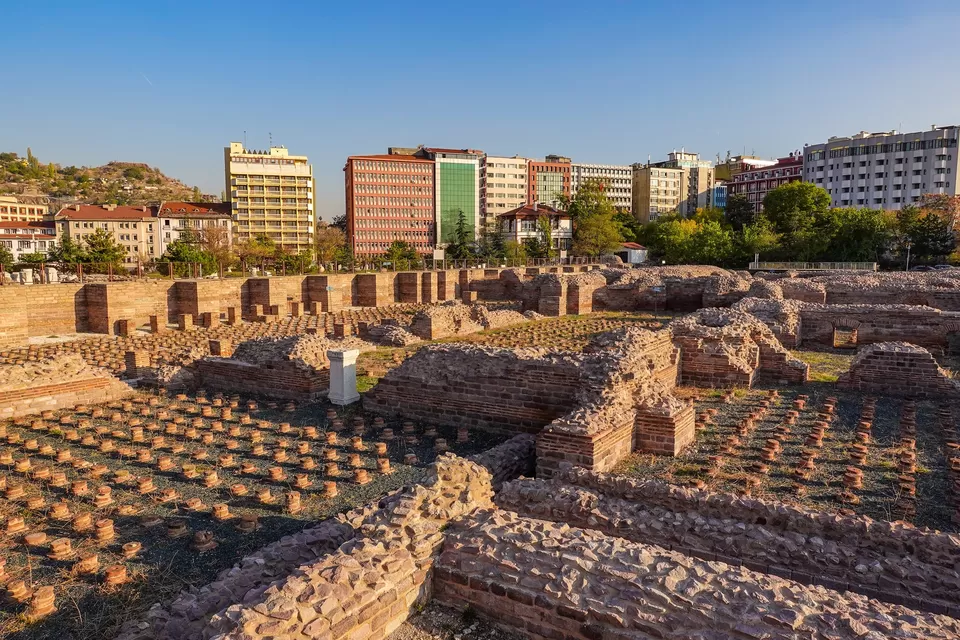
History of the Roman Baths of Ankara
The Roman Baths of Ankara were built in the 3rd century AD by the Emperor Caracalla, who ruled the Roman Empire from 211 to 217 AD. Caracalla was known for his ambitious building projects, such as the famous Baths of Caracalla in Rome, which were the largest and most lavish public baths in the ancient world. Caracalla also expanded the Roman Empire to its greatest extent, and visited many provinces, including Anatolia, the region that is now Turkey.
Ankara, or Ancyra as it was called by the Romans, was an important city in the province of Galatia, and served as a military and administrative center. Caracalla decided to build a magnificent bath complex in Ankara, to demonstrate his power and generosity, and to provide a place for the soldiers and the citizens to relax and enjoy themselves. The baths were designed by the architect Apollodorus of Damascus, who also worked on the Baths of Caracalla in Rome. The baths were constructed using local materials, such as marble, limestone, and brick, and covered an area of about 36,000 square meters.
The baths were in use until the 5th century AD, when they were damaged by a series of earthquakes and invasions. The baths were abandoned and buried under rubble, and remained hidden for centuries. In the 1930s, the Turkish archaeologist Hamit Zübeyr Koşay excavated the site and revealed the remains of the baths. The site was declared a national monument and an open-air museum, and has been undergoing restoration and conservation ever since.
Visiting the Roman Baths of Ankara
If you want to visit the Roman Baths of Ankara, here are some practical information and tips that you should know:
- The Roman Baths of Ankara are located in the Ulus district of Ankara, near the Gençlik Parkı (Youth Park) and the Ankara Opera House. You can easily reach the site by public transportation, such as buses, metro, or taxis. The nearest metro station is Ulus, which is about a 10-minute walk from the site.
- The Roman Baths of Ankara are open every day from 8:30 am to 5:30 pm, except on Mondays, when they are closed. The admission fee is 10 Turkish Liras (about 1 US Dollar), and you can buy your ticket at the entrance. You can also use the Museum Pass Ankara, which gives you access to many museums and historical sites in Ankara for 45 Turkish Liras (about 5 US Dollars).
- The Roman Baths of Ankara are an outdoor site, so you should dress according to the weather and wear comfortable shoes. You should also bring water, sunscreen, and a hat, especially in the summer, when it can get very hot and sunny. You can also bring a camera, as there are many photo opportunities at the site.
- The Roman Baths of Ankara are a large and complex site, so you should allow at least an hour or two to explore it. You can follow the signs and the information boards that explain the different sections and features of the baths. You can also hire a guide or join a tour group, if you want to learn more about the history and the culture of the baths. You can also download the Ankara Roman Bath app, which is a free and interactive guide that provides audio, video, and augmented reality content about the site.
- The Roman Baths of Ankara are a popular and crowded site, especially on weekends and holidays, so you should plan your visit accordingly. You should also respect the site and its rules, such as not touching or climbing on the ruins, not littering, and not smoking.

Palaestra
The Palaestra is the large courtyard that served as a social and exercise area for the visitors of the baths. The Palaestra was surrounded by colonnades and porticoes, and had a central pool and a fountain. The Palaestra was also used for various activities, such as wrestling, boxing, running, and ball games. The Palaestra was the place where people met, chatted, and made friends, before entering the bath complex.
At the Roman Baths of Ankara, you can see the remains of the Palaestra, such as the columns, the arches, and the pool. You can also see some of the objects and exhibits that were found at the site, such as statues, coins, pottery, and jewelry. Some of the most notable exhibits are:
- A statue of the Emperor Caracalla, who built the baths. The statue is made of marble and shows the emperor in a military attire, holding a sword and a shield. The statue is a replica, as the original is displayed at the Museum of Anatolian Civilizations in Ankara.
- A statue of the goddess Fortuna, who was the goddess of fortune and luck. The statue is made of marble and shows the goddess holding a cornucopia, a symbol of abundance and prosperity. The statue is also a replica, as the original is displayed at the Museum of Anatolian Civilizations in Ankara.
- A statue of the god Hermes, who was the messenger of the gods and the patron of travelers and merchants. The statue is made of bronze and shows the god wearing a winged helmet and sandals, and holding a caduceus, a staff with two snakes and wings, a symbol of commerce and communication. The statue is one of the few original exhibits at the site, and is considered a masterpiece of Roman art.
Bath Complex
The Bath Complex is the main attraction of the site, and the reason why the Roman Baths of Ankara are so famous and impressive. The Bath Complex was a series of rooms that provided different types of bathing and heating facilities, such as a sauna, a hot room, a cold room, and a massage room. The Bath Complex was also a place for relaxation, pampering, and healing, as the baths offered various treatments and therapies, such as aromatherapy, hydrotherapy, and massage.
The Bath Complex followed a typical Roman design, and consisted of three main sections:
- The Caldarium, which was the hot room, where the water and the air were heated by a furnace and a system of pipes and vents. The Caldarium had a large circular pool, called the Tepidarium, and two smaller pools, called the Laconicum and the Sudatorium. The Caldarium was the place where people sweated and cleansed their pores, and also enjoyed the hot water and the steam.
- The Frigidarium, which was the cold room, where the water and the air were cool and refreshing. The Frigidarium had a large rectangular pool, called the Natatio, and two smaller pools, called the Piscinae. The Frigidarium was the place where people cooled down and refreshed themselves, and also stimulated their circulation and immune system.
- The Apodyterium, which was the changing room, where people stored their clothes and belongings, and prepared themselves for the baths. The Apodyterium had a series of niches and lockers, called the Armaria, and also had benches and mirrors. The Apodyterium was the place where people undressed and dressed, and also groomed and beautified themselves.
At the Roman Baths of Ankara, you can see the remains of the Bath Complex, such as the walls, the floors, and the pools. You can also see some of the features and decorations of the Bath Complex, such as the mosaics, the frescoes, and the fountains. Some of the most notable features are:
- A mosaic of the god Oceanus, who was the god of the sea and the water. The mosaic is made of colorful tiles and shows the god with a beard and a crown of seaweed, surrounded by sea creatures and waves. The mosaic is located at the entrance of the Caldarium, and symbolizes the source and the abundance of the water.
- A fresco of the god Apollo, who was the god of the sun and the light. The fresco is painted on the wall and shows the god with a halo and a bow and arrow, riding a chariot pulled by four horses. The fresco is located at the ceiling of the Caldarium, and symbolizes the heat and the energy of the sun.
- A fountain of the god Dionysus, who was the god of wine and pleasure. The fountain is made of marble and shows the god with a grapevine and a cup, accompanied by a satyr and a panther. The fountain is located at the center of the Frigidarium, and symbolizes the joy and the fun of the baths.
- A fountain of the goddess Venus, who was the goddess of love and beauty. The fountain is made of marble and shows the goddess with a shell and a dolphin, surrounded by cherubs and flowers. The fountain is located at the entrance of the Apodyterium, and symbolizes the charm and the elegance of the baths.

Byzantine Tomb
The Byzantine Tomb is a rare and mysterious feature of the site, that adds another layer of history and intrigue to the Roman Baths of Ankara. The Byzantine Tomb is a large stone sarcophagus that dates back to the 6th century AD, and belongs to the Byzantine period, when Ankara was part of the Eastern Roman Empire. The Byzantine Tomb is located at the north-east corner of the site, near the Frigidarium.
The Byzantine Tomb is decorated with elaborate carvings and inscriptions, that depict scenes from the Bible and the life of Christ. The Byzantine Tomb also has a cross and a monogram, that identify the owner of the tomb as a high-ranking official or a noble. The Byzantine Tomb is one of the oldest and most valuable examples of Byzantine art and culture in Turkey, and is considered a masterpiece of Christian iconography.
The Byzantine Tomb is still a mystery, as the identity and the story of the person buried in it are unknown. Some scholars suggest that the tomb belongs to a Byzantine governor or a general, who was stationed in Ankara and died there. Some others suggest that the tomb belongs to a Byzantine princess or a queen, who was married to a local ruler and converted to Christianity. The Byzantine Tomb is also a mystery, as the reason and the way it was placed in the Roman Baths of Ankara are unclear. Some scholars suggest that the tomb was moved from another location and reused as a building material. Some others suggest that the tomb was intentionally placed in the baths as a symbol of the Byzantine domination and conversion of the region.
Balgat Roman Tomb
The Balgat Roman Tomb is a separate and lesser-known feature of the site, that offers a glimpse into the life and death of the ordinary people of the Roman Baths of Ankara. The Balgat Roman Tomb is a small stone sarcophagus that dates back to the 2nd century AD, and belongs to the Roman period, when Ankara was a prosperous and cosmopolitan city. The Balgat Roman Tomb is located outside the site, about 500 meters away, near the Balgat Bridge.
The Balgat Roman Tomb is inscribed with a Latin epitaph, that reveals the name and the occupation of the person buried in it. The epitaph reads:
D(is) M(anibus) / L(ucius) Valerius / L(uci) f(ilius) / Gal(eria) / Rufus / negotiator / vixit annis / XXXVIII / h(ic) s(itus) e(st)
Which means:
To the spirits of the dead / Lucius Valerius / son of Lucius / of the Galeria tribe / Rufus / merchant / lived 38 years / he is buried here
The Balgat Roman Tomb is one of the few and precious examples of Roman epigraphy and social history in Turkey, and is considered a valuable source of information about the life and the trade of the Roman Baths of Ankara.
Conclusion
The Roman Baths of Ankara are a must-see attraction for anyone who visits Ankara, the capital city of Turkey. The Roman Baths of Ankara are a fascinating and impressive site that showcases the glory and the culture of the Roman civilization. The Roman Baths of Ankara are also a relaxing and enjoyable site that offers a unique and memorable experience of the ancient spa of the emperors.
If you want to experience the Roman Baths of Ankara like an emperor, you should follow these steps:
- Plan your visit in advance, and choose the best time and mode of transportation to reach the site.
- Buy your ticket or use your Museum Pass Ankara, and enter the site.
- Explore the Palaestra, and admire the statues, the exhibits, and the pool.
- Enter the Bath Complex, and follow the sequence of the Caldarium, the Frigidarium, and the Apodyterium.
- Enjoy the heat, the water, and the steam, and imagine how the Romans bathed and pampered themselves.
- Admire the mosaics, the frescoes, and the fountains, and appreciate the art and the architecture of the baths.
- Visit the Byzantine Tomb, and marvel at the carvings and the inscriptions, and wonder about the mystery of the tomb.
- Visit the Balgat Roman Tomb, and read the epitaph, and learn about the life and the trade of the baths.
- Exit the site, and feel refreshed and enlightened by your visit.
The Roman Baths of Ankara are a treasure trove of history, culture, and beauty, that will make you feel like an emperor. Don't miss this opportunity to travel back in time and immerse yourself in the ancient culture of Rome. Visit the Roman Baths of Ankara today, and experience the ultimate Roman spa day.


